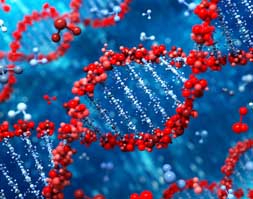Support system for remote diagnosis of genetic diseases based on diffuse cognitive maps
Keywords:
DIAGNOSIS, GENETICS, DATABASES, GENETIC, GENETIC RESEARCH.Abstract
Introduction: the medical decision-making process is complex, since medical data and information can often be inaccurate, contradictory, absent or not easy to be interpreted.
Objective: to develop a support system for the remote diagnosis of genetic diseases based on diffuse cognitive maps that allow improving the quality of health services in the National Network of Medical Genetics.
Method: it is an applied research with technological intervention that implements a system of decision-making support based on diffuse cognitive maps.
Results: a system for decision-making is presented, which facilitates the analysis of medical diagnosis, as part of the results obtained with the development of the project.
Conclusions: a system was obtained that made possible to evaluate clinical signs presented in the patients, greater organization of the information to be collected, to improve the speed of the diagnoses and the procedures to be followed, being able to give care in distant health centers without needing to be transferred, which would lead to a reduction in transportation costs, travel expenses, liquid fuels, as well as the time the benefits of health care are provided.
Downloads
References
1. Chrysafiadi K., Virvou M. Fuzzy Logic for Adaptive Instruction in an E-learning Environment for Computer Programming. Fuzzy Systems, IEEE Transactions [internet] on 2015 feb[cited 2017 oct 17]; 23(1): [aprox.13.p.]. Available from: http://ieeexplore.ieee.org/document/6763091/.
2. Aguilar J., Survey A. About Fuzzy Cognitive Maps Papers. INTERNATIONAL JOURNAL OF COMPUTATIONAL COGNITION [internet] 2005 [cited 2017 oct.17];3(2): Available from: http://citeseerx.ist.psu.edu/viewdoc/download?doi=10.1.1.108.2446&rep=rep1&type=pdf
3. Leyva M. , Rosado R. Modelado y análisis de los factores críticos de éxito de los proyectos de software mediante mapas cognitivos difusos. Ciencias de la Información[internet] 2012 [cited 2017 oct. 17]; 43(2):[aprox.5p]. Available from: http://www.redalyc.org/articulo.oa?id=181423798006.
4. Mar O., S. I, Gulín J. Competency assessment model for a virtual laboratory system and distance using fuzzy cognitive map. REVISTA INVESTIGACION OPERACIONAL[internet] 2017 [cited 2017 oct 17];38(2):[Aprox.8p.]. Available from: http://rev-inv-ope.univ-paris1.fr/fileadmin/rev-inv-ope/files/38217/38217-07.pdf
5. Contreras J., Paz P, Amaya D. Realistic Ecosystem Modelling with Fuzzy Cognitive Maps. International Journal of Computational Intelligence Research[internet] 2007 [cited 2017 oct. 17];3(2):[Aprox.5p.]. Available from: https://pdfs.semanticscholar.org/5f37/07892c560c47608fe95d630989f20a5a745b.pdf.
6. Leyva M. Modelo de ayuda a la toma de decisiones basado en Mapas Cognitivos Difusos. Tesis presentada en opción al Grado Científico de Doctor en Ciencias Técnicas ;2013.Available from: https://www.researchgate.net/publication/263221297_MODELO_DE_AYUDA_A_LA_TOMA_DE_DECISIONES_BASADO_EN_MAPAS_COGNITIVOS_DIFUSOS.
7. Grau I. , Gonzalo N. Mutating HIV protease protein using Ant Colony Optimization and Fuzzy Cognitive Maps: drug susceptibility analysis. Computacion y Sistemas[internet] 2014 [cited 2017 oct 17];18(1):[Aprox.12p.]. Available from: http://www.cys.cic.ipn.mx/ojs/index.php/CyS/article/view/1587.
8. González J., Mar O. Algoritmo de clasificación genética para la generación de reglas de clasificación. Publicaciones[internet] 2015 [cited 2017 oct 17 ];8(1):[Aprox.13]. Available from: https://www.redib.org/recursos/Record/oai_articulo983540-algoritmo-clasificacion-genetica-generacion-reglas-clasificacion.
9. Médica C.N.d.G. Portal de la Genética Cubana; 2015. Available from: http://articulos.sld.cu/genetica/archives/tag/genetica.
10. Pedrycz W. , Homenda W. From Fuzzy Cognitive Maps to Granular Cognitive Maps. Fuzzy Systems, IEEE Transactions [internet] on 2014 [cited 2017 oct. 17]; 22( 4):[Aprox.10p.] . Available from: http://ieeexplore.ieee.org/document/6576138/.
11. Mar O.,Leyva M.,Santana I. Modelo multicriterio multiexperto utilizando Mapa Cognitivo Difuso para la evaluación de competencias. Ciencias de la Información[internet] 2015 [cited 2017 oct 17]; 46( 2):[Aprox.6p.]. Available from: http://www.redalyc.org/html/1814/181441052004/
12. LÓPEZ R., MAURA G. La técnica de Iadov. Una aplicación en el estudio de la satisfacción de los alumnos por las clases de Educación Física. Revista Digital[internet] Abril 2002[citado 2017 oct 17]; 47(202). Available from: http://www.efdeportes.com/efd47/iadov.htm
13. Bouza C. Métodos cuantitativos para la toma de decisiones en contabilidad, administración, economía; 2016. Available from: https://www.researchgate.net/publication/303551295_METODOS_CUANTITATIVOS_PARA_LA_TOMA_DE_DECISIONES_EN_CONTABILIDAD_ADMINISTRACION_ECONOMIA

Published
How to Cite
Issue
Section
License
Authors who have publications with this journal agree to the following terms: Authors will retain their copyrights and grant the journal the right of first publication of their work, which will be publication of their work, which will be simultaneously subject to the Creative Commons Attribution License (CC-BY-NC 4.0) that allows third parties to share the work as long as its author and first publication in this journal are indicated.
Authors may adopt other non-exclusive license agreements for distribution of the published version of the work (e.g.: deposit it in an institutional telematic archive or publish it in a volume). Likewise, and according to the recommendations of the Medical Sciences Editorial (ECIMED), authors must declare in each article their contribution according to the CRediT taxonomy (contributor roles). This taxonomy includes 14 roles, which can be used to represent the tasks typically performed by contributors in scientific academic production. It should be consulted in monograph) whenever initial publication in this journal is indicated. Authors are allowed and encouraged to disseminate their work through the Internet (e.g., in institutional telematic archives or on their web page) before and during the submission process, which may produce interesting exchanges and increase citations of the published work. (See The effect of open access). https://casrai.org/credit/


